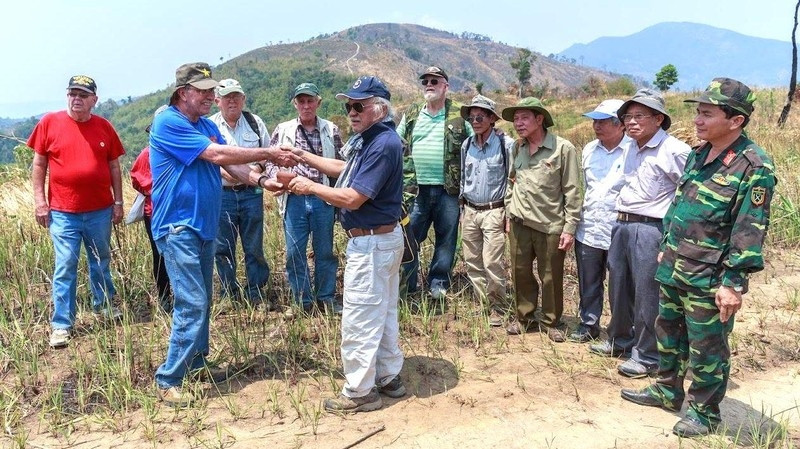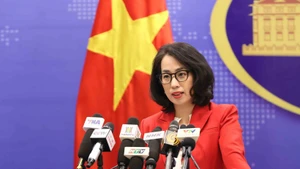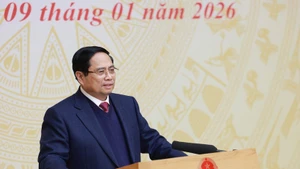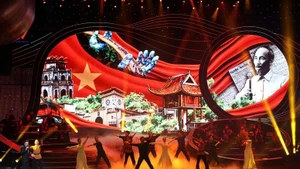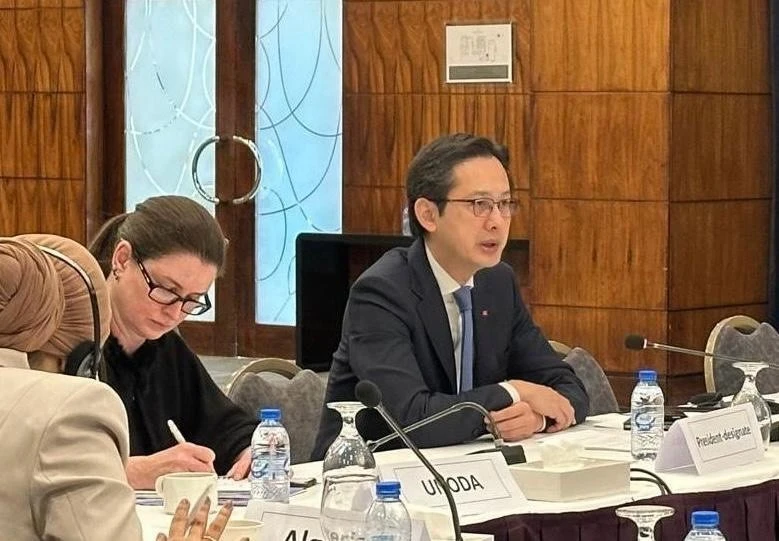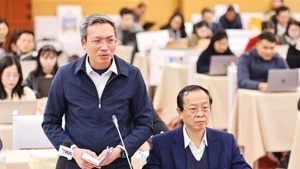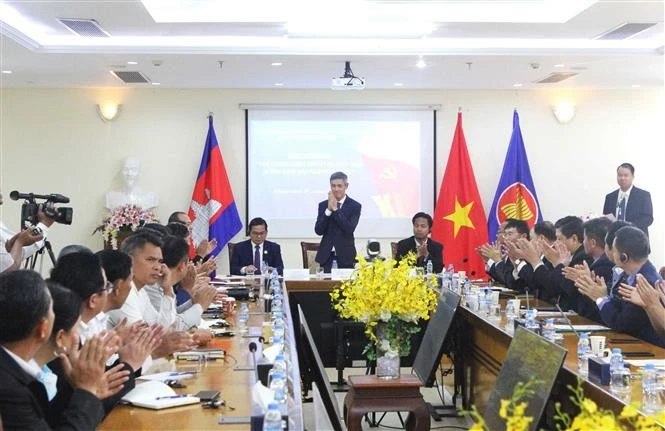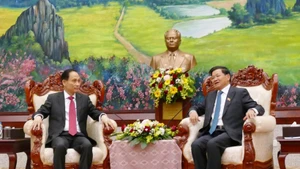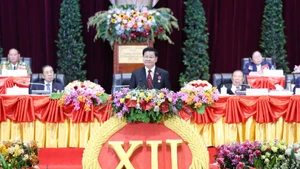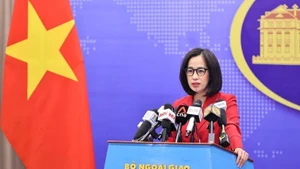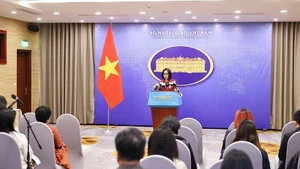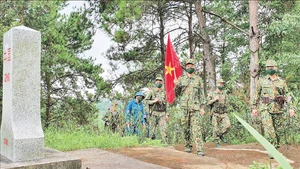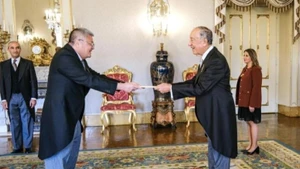Bob Connor felt restless and anxious during the 26-hour flight from the US to Vietnam. This is the first time he has returned to the old battlefield. Connor worried about how his meeting with people who had been enemies in the past would play out.
1. A few months ago, while searching for information on Google to help his oldest granddaughter with her school project, Connor happened to see a photo taken at Bien Hoa Airport in 1968. He immediately left a post with the hope that someone in Vietnam would read it: “As you look up the road where it makes a hard right. At that intersection is where the 3rd Security Police manned Bunker Hill 10. A significant battle took place here at the start of the Tet Offensive in 1968. At this location is a mass grave of approx. 150 Vietnamese soldiers buried on or about 2-Feb-1968 as a result of the Tet’68 battle.”
Two weeks later, he received an email from veteran Che Trung Hieu and Colonel Mai Xuan Chien, Deputy Political Commissar of the Military High Command of the southern province of Dong Nai, asking for his help in locating this mass grave. Knowing that the mass grave of Vietnamese soldiers who died at Bien Hoa Airport in 1968 had not yet been found, he wished to return to Vietnam and directly find the remains of these soldiers in order to “repair the error in the past”. “All missing soldiers need to be found and returned as soon as feasible. Both countries need to heal by continuing the reconciliation effort”, he said.
It was March 2016 when Connor returned to Vietnam. His tension disappeared when he met the colonel from the “other side”: “I first met Colonel Chien. As he walked toward me and saluted me. I, in turn, saluted him as well. He first asked about my flight then immediately asked about my wife. I knew immediately this would be a good trip.” Connor recalled.
The trip back to Vietnam for Bob Connor and Colonel Martin E. Strones helped the Military High Command of Dong Nai Province find a mass grave of 150 fallen soldiers at Bien Hoa Airport who died during battle on the night of January 31, 1968. This result has opened up a new search direction, bringing special reunions to thousands of martyrs’ relatives and families across the country.
It was a hard feeling for US veterans when they first returned to Vietnam. “When I left Vietnam in 1968, the last place on earth I ever wanted to see again was Vietnam. I carried a lot of anger and bitterness towards my enemy.” However, Edmunds returned to Vietnam in 1996, participated in humanitarian programmes, then became the project manager in coordinating the humanitarian efforts of the US war veterans in Vietnam. “The experience was like an emotional roller coaster ride with good days and bad days. Overall, it was a healing experience in my mind and my heart”, he said.
In 2009, he received an email from a friend of Vietnamese veteran Pham Van Chuc who could communicate in English. He asked Edmunds for help in locating the graves of his comrades who died in Chu Tan Kra, Kon Tum Province, on March 26, 1968. Edmunds responded that he would help but that he missed that battle. He would be meeting with guys that were there and gathering what information he could find.
Returning to Vietnam in October 2009, Edmunds carried with him a battlefield diary, several photos and papers collected from Vietnamese soldiers’ bodies and documentary photos of the battle at the 995 Chu Tan Kra base. Edmunds and Pham Van Chuc, two soldiers who were on opposing fronts during the life-and-death battles on the top of Chu Tan Kra, met again in the autumn of Hanoi. “We agreed that once we were enemies, now we are friends and had lunch together,” Edmunds recalled.
From the information provided by Edmunds, Pham Van Chuc and the veterans of the 209th Regiment coordinated with Sa Thay District, Kon Tum Province, to collect the remains of 81 martyrs, 77 of which were buried in a large grave at the Martyrs’ Cemetery in Sa Thay District, 4 martyrs’ remains and information were brought back to Hanoi by their relatives.
In 2016, Steve Edmunds, Terry Faulkner and John Cimino returned to Kon Tum to work directly with veterans from the 209th Regiment, crossing the mountains and forests to search for the remains of martyrs. Also on the occasion, John Cimino returned the wallet of a Vietnamese soldier that he had kept for nearly 50 years. Inside the wallet were four dime bills, a box of gold star oil, eight photographs, and a piece of paper with a few verses on it.
Immediately after receiving the memento, the liaison committee for veterans of the 209th Regiment, 1st Division, identified the owner of the wallet as martyr Hoang Quang Loi, a soldier of the 209th Regiment, who died at Chu Tan Kra at dawn on March 26, 1968.
It has been more than 10 years, but when recalling this event, Hoang Van Than, the younger brother of martyr Hoang Quang Loi, still could not hold back his emotions: “When I received news that a US veteran had stored my brother’s wallet and came back to Vietnam to return it, my family was very happy. Since receiving the death notice, for decades, my family had not known where he died, nor had a photo for worship, nor a memento left. So, after 50 years, thanks to this wallet, his family knows where he died and that he is now lying with his comrades in the mass grave at the Martyrs Cemetery in Sa Thay District, Kon Tum.”
“Over all those years I never felt like throwing it away. Strange as this might sound, I felt more like I was a custodian of this soldier’s life and memories, instead of the wallet just being a war souvenir,” John Cimino shared – “I was very moved to see the video of the ceremony and returning of the wallet to his family.”
From the information provided by US veterans, the liaison committee for veterans of the 1st Division coordinated with functional units to organise dozens of searches and unloaded 134 martyrs’ remains and many war souvenirs, including a pen named after Pham Ba Thi, who was the first hero of the 209th Regiment.
2. At nearly 80 years old, veteran Dang Ha Thuy in Hoai Nhon Town, Binh Dinh Province, has not stopped in his journey to find the remains of his teammates. He regularly contacted US veterans to exchange and find information about the mass graves of martyrs. In March 2022, from his valuable information, the Military High Command of Binh Dinh Province identified and gathered the mass graves of 60 martyrs of the 22nd Regiment, 3rd Gold Star Division, who died in the attack on the base of Xuan Son Hill in An Huu Commune, Hoai An District, during the night of December 26 and morning of December 27, 1966.
Dang Ha Thuy recalled, in 2018, through architect Nguyen Xuan Thang, he connected with Spencer Matteson, who participated in the battle of Xuan Son Hill. Through email, Matteson sent Thuy more than a dozen pages of documents including: a battlefield diary, report of the US side about the battle, satellite photos of the battlefield, information of US veterans who participated in this battle. These documents are the first clues to help Thuy determine that there is a mass grave of martyrs at Xuan Son Hill. At the end of 2021, Thuy continued to contact Bob March, former captain of the 1st Cavalry Division, who directly participated in the battle of Xuan Son, asking him to provide more information about the grave’s location. Bob March emailed Thuy a four-page A4-page report and two maps of the location of the mass grave at Xuan Son Hill. From the information and documents provided by Bob March, the Military High Command of Binh Dinh Province located and gathered the remains from martyrs’ mass graves at Xuan Son Hill and repatriated them at the Martyrs’ Cemetery in Tang Bat Ho Town, Hoai An District, Binh Dinh Province.
“I became involved with helping when Major Dang Ha Thuy, a former NVA officer during the war, sent me an email asking for help. His request was a big surprise to me. But it immediately seemed like a wonderful thing to do. Now I am spending more time on this. After I heard from Major Thuy, I contacted the veterans who were at LZ Bird (Xuan Son Hill). Everyone I talked with was very positive about helping as much as they could”, Bob March said.
Bob March is 90 years old now, but he still tries every day to contact US veterans who fought in Vietnam to find information about mass graves. Although his age and health did not allow him to make long and arduous trips, he still wished to return to Vietnam. He also wrote articles US Veteran’s magazines to let people understand how Vietnam is making efforts to find the remains of fallen soldiers. March said it is important that the American witnesses be found quickly, because they are getting very near the end of their lives. “Unfortunately, the location of mass graves was not recorded during the war, so searching through old paper records is no substitute for the recollections of those who were there,” he said.
Currently, March is with former pilot Richard W. Magner, Thuy and some volunteers to analyse and identify the mass graves of martyrs of the D40 Commando Battalion, who died in the battle of the Dong Chu sandbank in Binh Dinh on November 3, 1969. He said he was planning to return to Binh Dinh this July to search for martyrs’ mass graves, and then visit some martyrs’ families.
3. According to Colonel Mai Xuan Chien, since connecting with the US veterans who directly witnessed or buried Vietnamese soldiers, or exploited declassified US documents, the search for the remains of martyrs achieved good results. The US veterans are very enthusiastic, responsible and methodical in their help. After assisting in the search for mass graves at Bien Hoa Airport, they continued to help in finding the remains of martyrs at Tan Son Nhat Airport and in several provinces such as Dong Nai, Tay Ninh, Binh Phuoc, Binh Duong, and Binh Dinh... “I think the important experience is how to contact the warring parties such as US veterans and the US Department of Defense to provide us with information and documents. In that direction, many mass graves will be found, and the repatriation of martyrs' remains will be highly effective,” said Colonel Chien.
After the event of finding martyrs’ graves at Bien Hoa Airport, the People’s Committee of Dong Nai Province sent a letters of thanks to Mr. Bob Connor and Colonel Martin E. Strones. The letter spoke highly of the enthusiasm of the US veterans who provided information about the mass grave, and their support has a great meaning and humanity helps ease the pain caused by the war.
Bob Connor shared about his actions: “Why did we return? Because we know all families of those who did not come home suffer the same exact pain. Be they Vietnamese or American, neither get the solace nor closure they deserve. For them, the war has never ended. All missing soldiers need to be found and returned as soon as feasible. Both countries need to heal by continuing the reconciliation effort.” Spencer Matteson said: “To the families of the martyrs, all I can say is I’m sorry. I’m sorry for all the families that lost loved ones (Vietnamese and American), in a war that could have been avoided. I hope our two nations can normalise relations so that we become allies and never become enemies again.”
After many years of searching for remains of his teammates, Ho Dai Dong, Head of the liaison committee for veterans of the 1st Division, understands that, in order to find the remains of martyrs effectively, in addition to the information and documents in the archives and documents by the US declassification, the information support and direct participation of US veterans in the search plays a very important role. The search and repatriation of martyrs' remains will be more convenient and effective if information on satellite maps are digitised.
Vietnam-US relations have completely changed after nearly half a century since the ending of the war and nearly 30 years of normalising diplomatic relations between the two countries. The reconciliation process was once extremely difficult, but it has grown beyond expectations thanks in part to the individual efforts of veterans from both sides. They are not only looking for healing for themselves, but also for the fine relationship between the two countries.
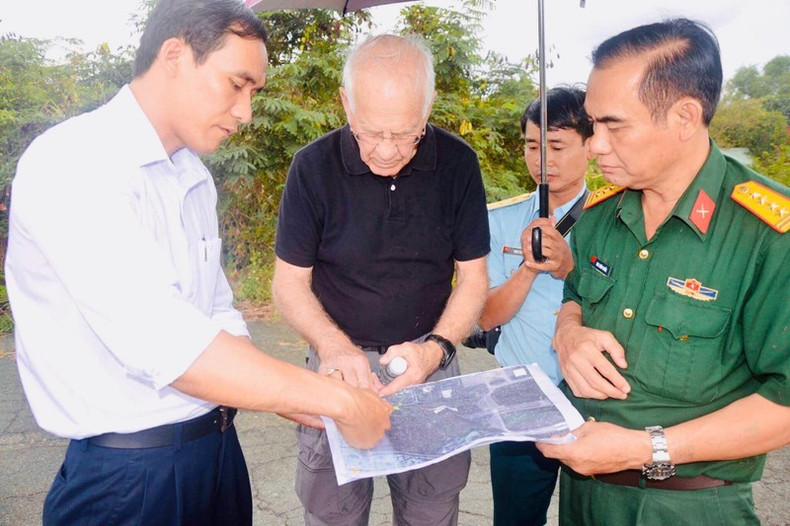
Colonel Mai Xuan Chien (right), Deputy Political Commissar of the Military High Command of the southern province of Dong Nai, and Colonel Martin E. Strones locate the mass grave of martyrs at Bien Hoa Airport.
| “Jumping out five years to the present, we have now provided Vietnam with the locations of approx. 8,000 Vietnamese soldiers. We have tremendous empathy for the Vietnamese people. The war was wrong. We went thinking it was the right thing. Not listening more and understanding the culture was our error. Hopefully we contribute to making a positive impact or repairing the past as best we can and work together to maintain peace not only for Vietnam but all of Southeast Asia.” BOB CONNOR |
